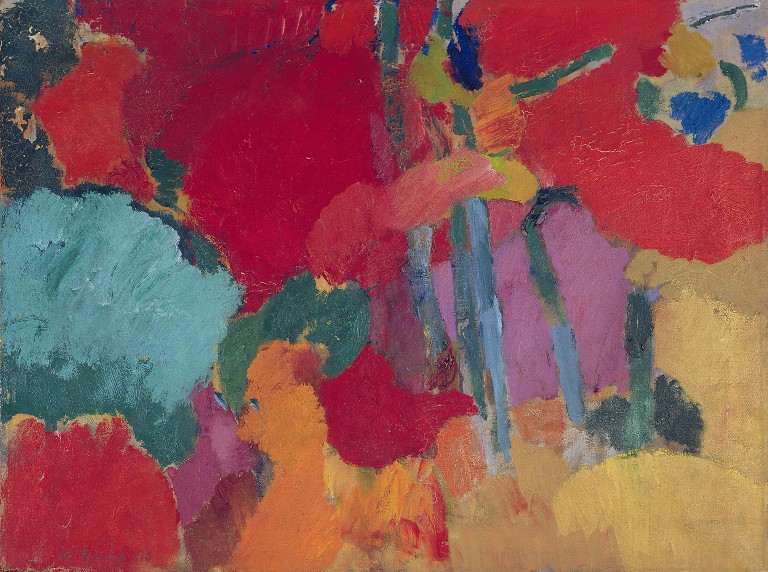White Unicorn Gallery in Klatovy
7. 8. – 25. 9. 2011
After his earliest paintings, created in a spirit of Surrealist and Post-Cubist inspiration Zdeněk Sýkora turned to the study of nature at the end of the 1940s. For the next decade, the landscape served as his main theme and an inspiring natural setting in which he could test his theoretical knowledge of painterly vocabulary, primarily of French origin: the Barbizon school and later Post-Impressionism. His motifs were found in his native town of Louny, or more generally in the open landscape close to the town or further away. Austere compositions of fields, meadows and sections of forest alternated with views of tree-lined roads or the river Ohře, or at other times with the distant outline of the Central Bohemian Mountains. The choice of subjects reflects not only the artist’s immediate enchantment with his visual experience, but equally an apprehension and understanding of the landscape and its timeless values. Perhaps for this very reason, he very soon abandoned the traits of impressionism and moved towards a non-illusive colourfield composition. Decisive for this phase was his encounter with the works of Henri Matisse in the Leningrad Hermitage in 1959. Matisse’s increasingly lapidary forms, through the repetition of series of the same theme along with the liberation of colour and line from dependence on reality, captured Sýkora’s attention and convinced him of the correctness of his own path. Under the impression of this encounter, Sýkora painted new canvases or reworked old ones in this spirit, and the extensive cycle ‘Gardens’, created at this time, marked a definitive shift from the depiction of the visible world to the formation of its abstract equivalent. In the course of just under three years, the original organic forms of the first gardens from 1959 became more geometric, gradually and naturally, up until the final canvas of this loosely defined cycle - Garden / Composition, 1961, which is unambiguously a transition to geometric abstraction. Though his later work is primarily abstract creation, Sýkora often returned to landscapes: both as a university instructor with his students as well as individually, or even with the painters’ association in Louny, which he headed from the 1960s onward. The current exhibition focuses on the three mentioned areas of work, not only as they represent the highest number of paintings, but also to note the thematic continuity from the previous decade. By the end of the 1980s, the frequency of Sýkora’s painting trips into natural surroundings decreased, and by the early 1990s his landscape painting stopped altogether. The landscape work of Zdeněk Sýkora, though created in parallel with his abstract painting, has had practically no consideration since the 1960s, at most mentioned only in passing or even viewed negatively as a kind of anachronism unusual for an otherwise progressive artist. Sýkora’s repeated nature-excursions were most often understood as only a practical component of his work as a teacher. In this respect, it is worth noting that Sýkora’s first solo exhibition, in the Aleš Hall in Prague in 1952, was in fact his very last devoted exclusively to the landscape theme. Hence it is the desire of the organisers of the exhibition to stress Sýkora’s landscape paintings as a phenomenon worthy of our attention, an integral part of his creative personality, and smoothly to integrate them into the context of the artist’s development.
Jan Samec, 2010 – curator exhibition

